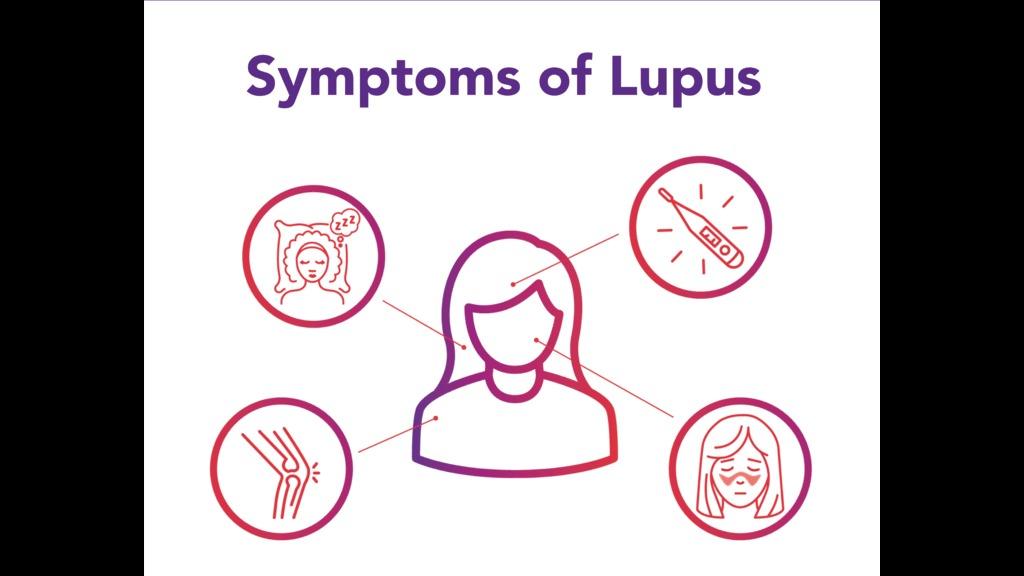Imagine feeling tired every day, your joints are hurting, and your skin is breaking into rashes – but not knowing why. It is a reality for millions of people living with lupus, an autoimmune disease that can be difficult to diagnose due to its unexpected nature.
Lupus affects more than 1.5 million Americans, yet its symptoms can mimic other diseases, making it challenging to early detection. If you or a dear person are experiencing unexpected symptoms, understanding Lupus can be the first step towards obtaining appropriate treatment.
In this guide, we will break the most common symptoms of lupus, real-world case studies, and actionable tips, so that you can help manage the disease effectively.
What is lupus, and why does it matter?
Lupus is an autoimmune disease, which means that the body’s immune system accidentally attacks its tissues. It leads to inflammation and damage in many organs, including skin, joints, kidneys, heart, and brain.
The most common form of lupus is systemic lupus erythematosus (SLE), but other types, include:
- Dermal lupus (affects the skin)
- Drug-induced lupus (due to certain drugs)
- Newborn lupus (affects newborns of mothers with lupus)
- Before understanding symptoms, diagnosis, better treatment options and quality of life can improve.
- Common symptoms of lupus
1. Fatigue and excessive fatigue
- More than 90% of lupus patients experience chronic fatigue.
- Unlike normal fatigue, fatigue related to lupus does not improve with comfort.
- Fatigue can affect daily activities, work performance, and mental welfare.
2. Joint pain and swelling
- Often confused with arthritis, lupus especially causes hard, swollen, and painful joints in the morning.
- Unlike rheumatoid arthritis, lupus joints hurt and come up rather than deteriorating progressively.
3. Butterfly-shaped facial rash
- A hallmark symptom of lupus, it spreads to the rash cheeks and nose.
- It can be triggered by coming in contact with the sun, and it can last for days or weeks.
4. Skin sensitivity and wound
- Lupus patients often develop red, crust patches on the exposed skin.
- Photosensitivity can make the symptoms worse.
5. Symptoms like fever and flu
- Many lupus patients experience lower-grain fever that comes and goes.
- These fevers are usually below 101 ° F (38.3 ° C) and may be an early warning signal of inflammation or infection.
6. Kidney problems (lupus nephritis)
- 50% of lupus patients develop kidney-related issues.
- Symptoms include swelling in the legs, dark urine, and high blood pressure.
7. Chest pain and shortness of breath
- Lupus can cause inflammation around the heart (pericarditis) and lungs (pleuritis).
- This causes chest pain when breathing deeply, often misdiagnosed as heart disease.
8. Neurological and cognitive issues
- Some lupus patients develop difficulty in brain fog, memory loss, or focus.
- In severe cases, lupus can cause seizures, stroke, or depression.
9. Hair loss (alopecia)
- Lupus can cause thinning of hair or bald patches due to swelling in the scalp.
- Hair loss is often temporary and improves with treatment.
10. Digestive issues
- Symptoms such as nausea, swelling, acid reflux, and abdominal pain can occur.
- These can be connected to the side effects of the drug or inflammation related to lupus in the digestive system.
Real-World Case Studies: How Lupus Affects Life
Case Study 1: Sarah’s visit for diagnosis
The 28-year-old teacher, Sara, began to experience unexplained fatigue, joint pain, and skin rashes. Doctors initially diagnosed stress and fibromyalgia. After years of misunderstanding, a positive ANA test (Antinuclear Antibody Test) confirmed the lupus. Today, she manages her symptoms with drugs, dietary changes, and stress reduction techniques.
Case Study 2: Mark’s fight with Lupus nephritis
The 35-year-old engineer, Mark, developed inflamed ankles and frequent hypertension. A kidney biopsy revealed lupus nephritis, requiring aggressive treatment with immunosuppressants and dietary modifications. Initial detection helped them avoid dialysis.
Actionable tips for managing lupus symptoms
1. Work with a rheumatologist
A specialist can make an individual treatment plan based on your symptoms and blood test results.
2. Take medicines as prescribed
Common lupus drugs include:
- Hydroxychloroquine (Plaquenil) – reduces flares.
- Corticosteroids – Manage inflammation
- Immunosuppressants – Press the immune system
3. Protect your skin from the sun
- Wear sunscreen (SPF 50+), hats, and protective clothes.
- Avoid direct contact with the sun to prevent provoking.
4. Maintain a lupus-friendly diet
- Eat more: omega-3S (fish, linseed), leafy greens, and anti-inflammatory foods.
- Avoid processed foods, red meat, and excessive salt and sugar.
5. Manage stress and prioritize rest
- Yoga, meditation, or deep breathing exercises are engaged.
- Get 7-9 hours of quality sleep per night.
6. Be active without overdoing it.
- Options for low-effect exercises such as swimming, walking, or stretching.
- Avoid pushing through excessive fatigue.
7. Monitor the symptoms and seek support
- Keep a symptom diary to track the side effects of flair-ups and medicine.
- Facing similar challenges should include lupus help groups to connect with others.
Common mistakes to escape
1. Ignoring early symptoms
Many people reject the early signs of lupus as stress, aging, or a minor disease.
2. Skipping medicines
Stopping the drug suddenly can cause severe flares and complications.
3. Overexerting
It is important to learn to speed up yourself in the management of lupus fatigue.
4. Ignore mental health
Anxiety and depression are common in lupus patients. Therapy and help groups can help.
Lupus research and the future of treatment
1. Accurate medical and genetic research
Scientists are searching for personal treatment plans based on genetics.
2. Advanced biological therapy
New drugs such as Benlysta (Belimumab) are offering better disease management with fewer side effects.
3. AI and Lupus Wearable Technology for Monitoring
Smartwatches and health apps are helping patients track symptoms and adherence to medicine.
Conclusions: Control Your Lupus Journey
Lupus is a complex and challenging situation, but early diagnosis, lifestyle adjustment, and proper treatment can greatly improve the quality of life.
Do you or a loved one struggle with Lupus? Share your experience in the comments below or find out our recommended resources for lupus support and treatment!




